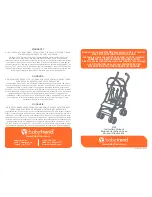
KGL Operating Manual – VS 3010 BS
2018-07-02
/
171 178
11 Alarms and messages VS 3010 BS
11.1 Message system
A number of messages are recognised by the system and stored with date, time and the priority in the internal
log memory of the system.
are stored in the log memory. The time resolution is one
Received / sent messages
minute. The messages are stored in the log memory in the chronological order of their generation. The log
memory has a capacity of 200 entries. If the log memory is filled, the latest message overwrites the oldest
entry (ring buffer).
The log memory is buffered so that no messages are lost in the event of power failure. The
messages can be retrieved using the operator terminal. The latest message is output as the first one.
The contents of the log memory can be deleted using the operator terminal. Messages are also sent
via the CAN bus to display the current message using the operator terminal and thus the system
centre can establish a central fault message memory for the complete refrigeration pack system.
11.2 Structure of the messages
Messages consist of date, time, the priority and message-specific plain text. They are shown on the display of
the operator terminal in 3 lines of 20 characters each. One line is used for the display of the active controller.
Line
Example
Data
1
Messages ID: xxxxx
active controller
2
Motor overload cutout C1
Message text
3
20/5/98 10:20 ON
Date and time of the message
4
20/5/98 10:25 OFF
Clearance of the fault
Up to 100 alarm priorities are provided. Possible priorities for alarms and messages have now been raised
from the previous ---, 0, 1 and 2 to 99. This priority range is divided into 10 alarm groups (decades).
The 1 and 2 priorities (1,11,21,...91 and 2,12,22,...92) are reserved for high priority alarms which
activate the alarm relays “PRIO1” and “PRIO2” as well as the LEDs “PRIO1” and “PRIO2” on the front
of the store computer.
The highest priority number in each group (9,19,29,...99) is reserved for low priority alarms which
should only generate local alarm signalling (e.g. open cold room door).
All other priority numbers are provided for low priority alarms.
The lowest priority number in each group (0,10,20,..90) is reserved for messages which are only
recorded in the message list.
If the priority is set to "–", no message is generated.
This division into alarm groups (decades) facilitates maintenance group oriented alarm management.
The alarm priorities --, 0..2 correspond to the remote alarm signalling concept of older store computer
versions with firmware versions <5.0. If priorities from 3..99 are configured in the controller, the store
computer must be updated to a firmware version of 5.0 or higher.
Further information is provided in
the store computer operating manual.
For Version 2.0 and higher, an automatically generated message with the specified priority 0 (only archived in








































